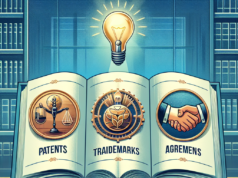In a world increasingly driven by digital content and collaborative creativity, the recent updates to Creative Commons (CC) licenses mark a significant turning point for content creators and users alike. Established in 2001, Creative Commons has played a pivotal role in promoting open access to creative works, allowing individuals to share, remix, and build upon each other’s contributions. As the digital landscape evolves, so too must the frameworks that govern it. This article delves into the revolutionary changes in Creative Commons, exploring their implications for artists, educators, and the broader community.
Understanding the Evolution of Creative Commons: A Brief Overview of Its History
Creative Commons was founded with the mission to expand the range of creative works available for others to build upon legally and to foster a culture of sharing. The organization introduced its first set of licenses in 2002, which provided a flexible range of protections and freedoms for authors, artists, and educators. Over the years, Creative Commons has adapted to the changing needs of the digital age, responding to the rise of social media, user-generated content, and the increasing importance of open data. The organization has continually refined its licenses to ensure they remain relevant and effective, culminating in the latest updates that promise to reshape the landscape of open licensing.
Key Changes in Creative Commons Licenses: What Has Been Updated and Why
The recent updates to Creative Commons licenses include the introduction of new terms and clarifications aimed at enhancing usability and accessibility. Notably, the licenses now feature simplified language and clearer guidelines, making it easier for users to understand their rights and obligations. Additionally, the updates address the growing concerns around attribution and the use of AI-generated content, providing specific provisions that protect the rights of original creators while allowing for innovative uses of their work. These changes reflect a commitment to inclusivity and adaptability, ensuring that Creative Commons remains a relevant tool in an ever-evolving digital environment.
The Impact of New Creative Commons Policies on Content Creators and Users
The revised Creative Commons policies are poised to have a profound impact on both content creators and users. For creators, the clearer licensing terms reduce the risk of unintentional copyright infringement, empowering them to share their work more freely while retaining control over its use. Users, on the other hand, benefit from a more straightforward understanding of how they can legally utilize and remix creative works. This democratization of access encourages collaboration and innovation, fostering a vibrant ecosystem where creativity can flourish without the constraints of traditional copyright laws.
Navigating the Revised Licensing Framework: A Guide for Artists and Educators
For artists and educators looking to navigate the revised Creative Commons licensing framework, understanding the nuances of the updated licenses is crucial. Creators should familiarize themselves with the different types of licenses available, including those that allow for commercial use versus those that are strictly non-commercial. Educators can leverage these licenses to enhance their teaching materials, encouraging students to engage with open resources while respecting the rights of original creators. Additionally, both groups should consider the implications of the new provisions regarding AI-generated content, ensuring they remain compliant while exploring innovative avenues for creativity.
Legal Implications of the Recent Creative Commons Changes: What You Should Consider
The legal landscape surrounding Creative Commons licenses has become increasingly complex with the recent updates. While the licenses are designed to be user-friendly, creators and users must remain vigilant about the legal implications of their choices. It is essential to understand the specific terms of each license, particularly regarding attribution, derivative works, and the use of AI-generated content. Failure to comply with these terms can result in legal repercussions, undermining the very principles of sharing and collaboration that Creative Commons seeks to promote. Therefore, seeking legal advice or consulting with experts in intellectual property law may be prudent for those navigating this new terrain.
Future Directions for Creative Commons: Trends and Predictions for Open Licensing
Looking ahead, the future of Creative Commons appears promising, with several trends likely to shape its evolution. As the digital landscape continues to expand, the demand for open licensing will grow, particularly in fields such as education, research, and the arts. The integration of blockchain technology may also play a role in enhancing transparency and traceability in the use of creative works. Furthermore, as discussions around digital rights and ethical AI usage gain momentum, Creative Commons is expected to remain at the forefront of these conversations, advocating for a balanced approach that respects both creators’ rights and the public’s access to knowledge.
In conclusion, the recent changes to Creative Commons licenses represent a significant advancement in the realm of open access and creative collaboration. By simplifying licensing terms and addressing contemporary challenges, Creative Commons is poised to empower a new generation of creators and users. As the digital landscape continues to evolve, staying informed about these changes will be essential for anyone engaged in the creation or use of digital content. Embracing the principles of open licensing not only fosters innovation but also cultivates a culture of sharing that benefits society as a whole.



























